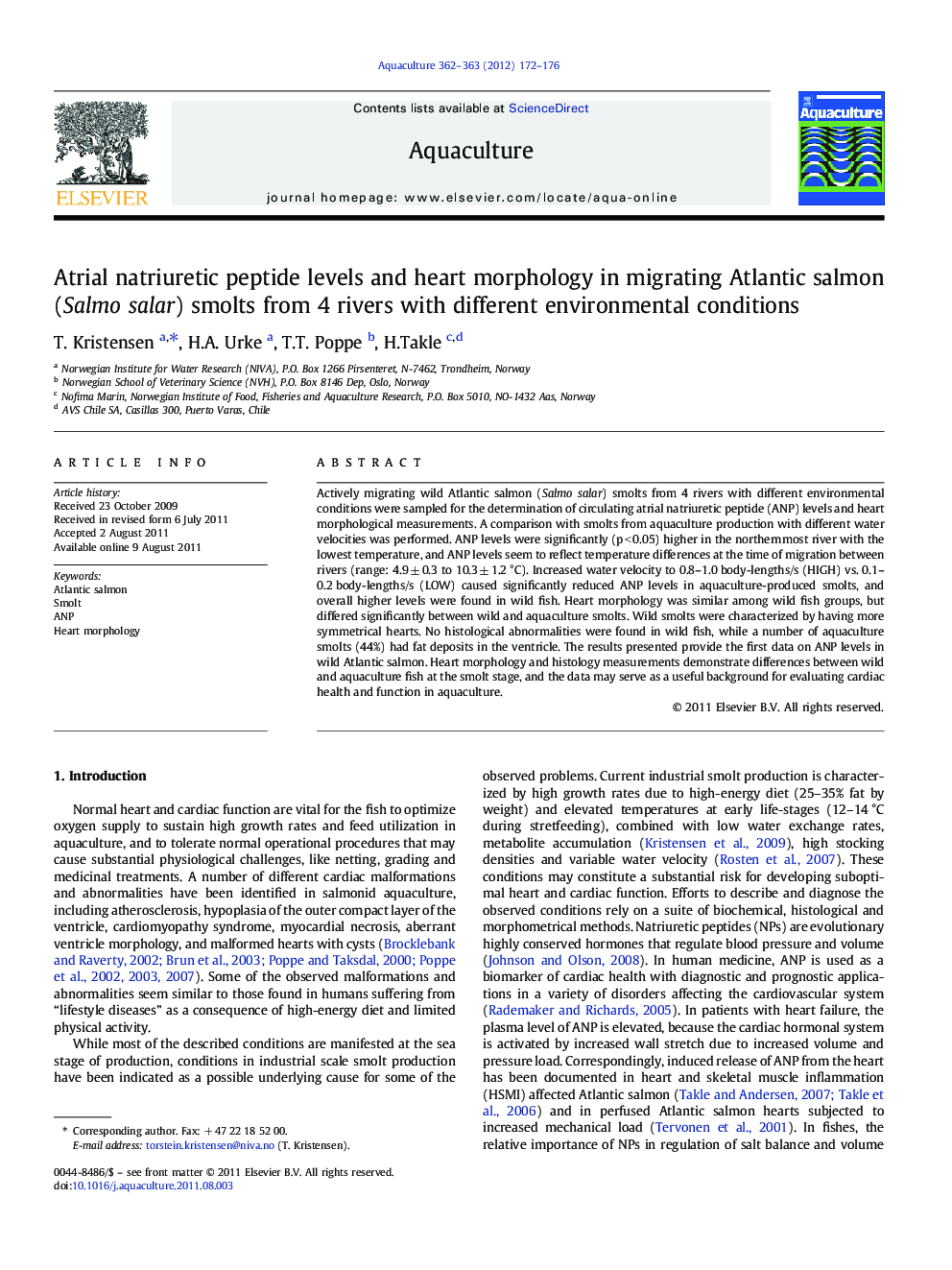| Article ID | Journal | Published Year | Pages | File Type |
|---|---|---|---|---|
| 2422336 | Aquaculture | 2012 | 5 Pages |
Actively migrating wild Atlantic salmon (Salmo salar) smolts from 4 rivers with different environmental conditions were sampled for the determination of circulating atrial natriuretic peptide (ANP) levels and heart morphological measurements. A comparison with smolts from aquaculture production with different water velocities was performed. ANP levels were significantly (p < 0.05) higher in the northernmost river with the lowest temperature, and ANP levels seem to reflect temperature differences at the time of migration between rivers (range: 4.9 ± 0.3 to 10.3 ± 1.2 °C). Increased water velocity to 0.8–1.0 body-lengths/s (HIGH) vs. 0.1–0.2 body-lengths/s (LOW) caused significantly reduced ANP levels in aquaculture-produced smolts, and overall higher levels were found in wild fish. Heart morphology was similar among wild fish groups, but differed significantly between wild and aquaculture smolts. Wild smolts were characterized by having more symmetrical hearts. No histological abnormalities were found in wild fish, while a number of aquaculture smolts (44%) had fat deposits in the ventricle. The results presented provide the first data on ANP levels in wild Atlantic salmon. Heart morphology and histology measurements demonstrate differences between wild and aquaculture fish at the smolt stage, and the data may serve as a useful background for evaluating cardiac health and function in aquaculture.
